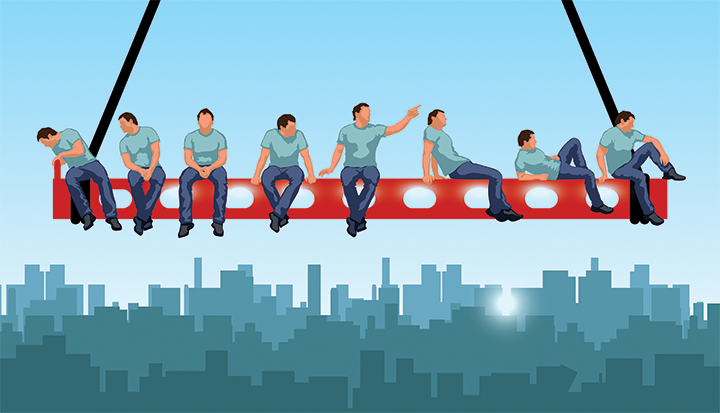Most Traumatic Brain Injury Deaths in Construction Due to Falls

From 2003 to 2010, 2,210 construction workers died from work-related traumatic brain injury, usually as the result of a fall from a height, according to a recent study at the National Institute for Occupational Safety and Health.
The first step in preventing deaths from TBI is to identify and then control risks.
Since current research on work-related TBI is limited, NIOSH investigators wanted to identify the major risks to workers in the construction industry.
To identify these risks, they analyzed data on TBIs from the Bureau of Labor Statistics Census of Fatal Occupational Injuries and reported their findings in the peer-reviewed American Journal of Industrial Medicine.
Traumatic Brain Injury Risk Factors
They found that some construction workers were at greater risk of dying from a traumatic brain injury than others.
Specifically, the risk of dying from a TBI varied according to sex, age, country of birth, occupation, and size of the construction company:
Men were seven times more likely than were women to die from a TBI.
Age. The greatest risk was among older workers. Compared to younger workers aged 25 to 34 years, workers 65 years and older were almost four times more likely to die from a TBI.
Country of birth. The greatest risk was among foreign-born workers, who were significantly more likely than native-born workers to die from a TBI.
Occupation. The greatest risk was among structural iron and steel workers and roofers. In these occupations, fall-related TBIs were the leading cause of death.
Size of company. The greatest risk was among workers in small construction companies employing fewer than 20 employees. Compared to workers in larger companies with 100 or more employees, those in small companies were 2.6 times more likely to die from a TBI.
Safety Interventions Needed
According to the investigators, safety interventions—especially among the most vulnerable—are necessary to reduce fall-related TBIs among construction workers.
To address the need for safety interventions, NIOSH partnered with OSHA and The Center for Construction Research and Training to promote the Safety Stand-Down, a nationwide construction falls-prevention campaign.
Now in its third year, the campaign seeks to raise awareness by encouraging everyone in construction to work safely and use the right safety equipment while working at heights, such as on roofs, ladders, and scaffolds.
In addition to the campaign, NIOSH also developed the Ladder Safety smartphone app, which prevents falls from ladders by providing visual and audio signals as well as safety tips for safe extension ladder positioning.
RELATED
EXPLORE BY CATEGORY
Stay Connected with CBIA News Digests
The latest news and information delivered directly to your inbox.


